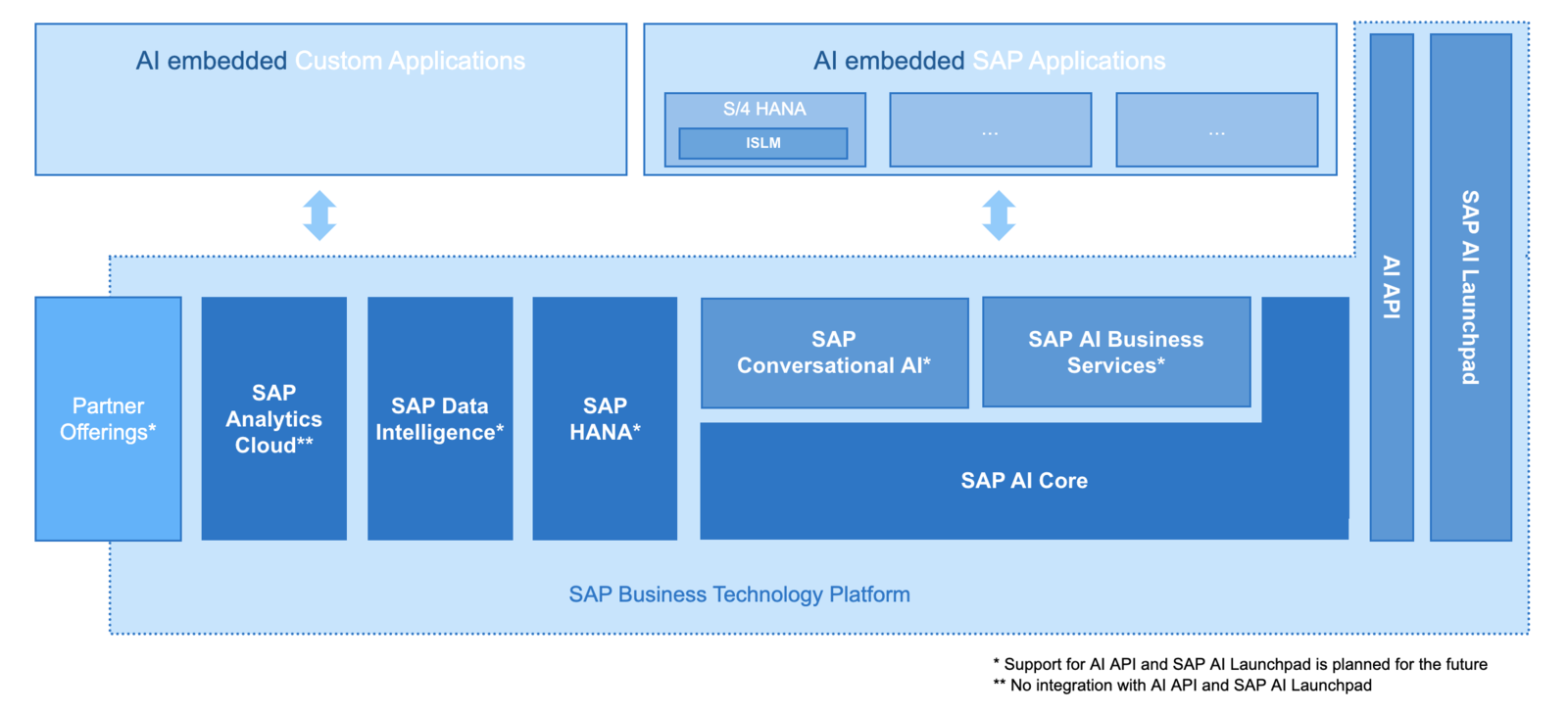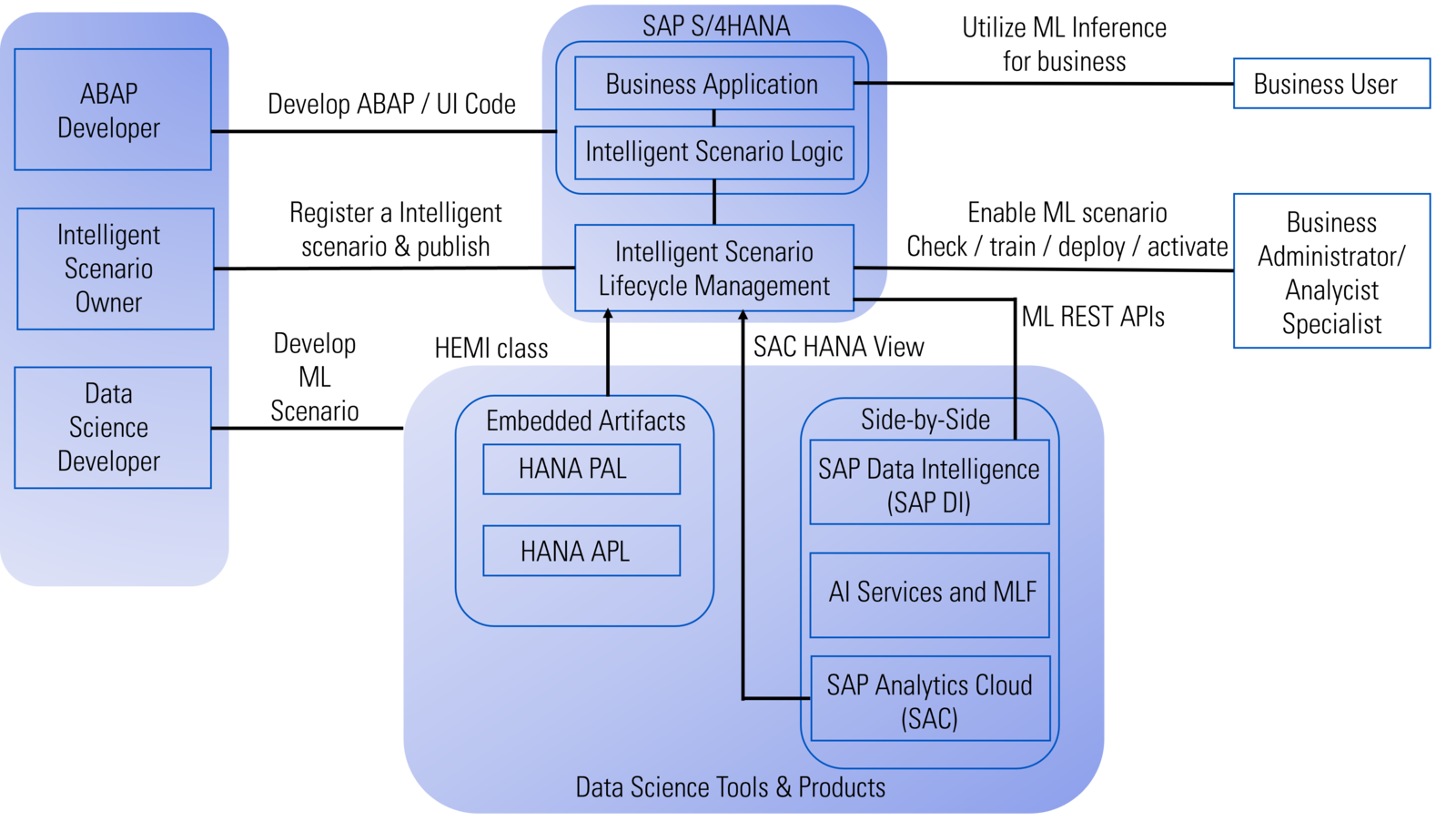Artificial intelligence (AI) and SAP
Technological breakthroughs have recently given artificial intelligence (AI) a considerable boost and sparked interest among many SAP customers. AI offers enormous potential for automation and process insights, especially in the form of machine learning (ML).
What Benefits Does ML Offer?
ML offers the possibility to extract correlations and decision patterns from datasets. All ML models need to be created once from a set of initial learning data. In our context, this is often historical company data. A great deal of computational effort is associated with creating an ML model. However, once created, it can then be quickly applied to new data with very little computational effort.
Of the numerous possible uses, the following two examples describe the benefits of ML technology within the SAP environment:
- Automation of core processes: for the classification of business transactions, automatic decisions, and data transformation, for example
- Data analysis: data extrapolation for forecasting purposes, uncovering unexpected correlations
Which ML Models Exist at SAP?
SAP defines machine learning scenarios (or intelligent scenarios) as a business use case for ML with clear integration points into core processes and firmly defined learning data/results data. A distinction is made between embedded ML and side-by-side ML.
In the case of embedded ML, machine learning is learned and executed directly on the S/4HANA database, which imposes limitations on model selection and performance. With side-by-side ML, the computationally intensive ML processes are offloaded to external systems, enabling more powerful ML applications. Here, various payable cloud services are available based on the SAP Business Technology Platform (BTP), which forms the common platform for most SAP Cloud products (see here). From a technical perspective, however, the use of a customer's own servers or other cloud providers are also conceivable. For both ML approaches, in addition to a few dozen pre-built ML scenarios, there are also options for tried-and-trusted ML experts to develop separate models.


